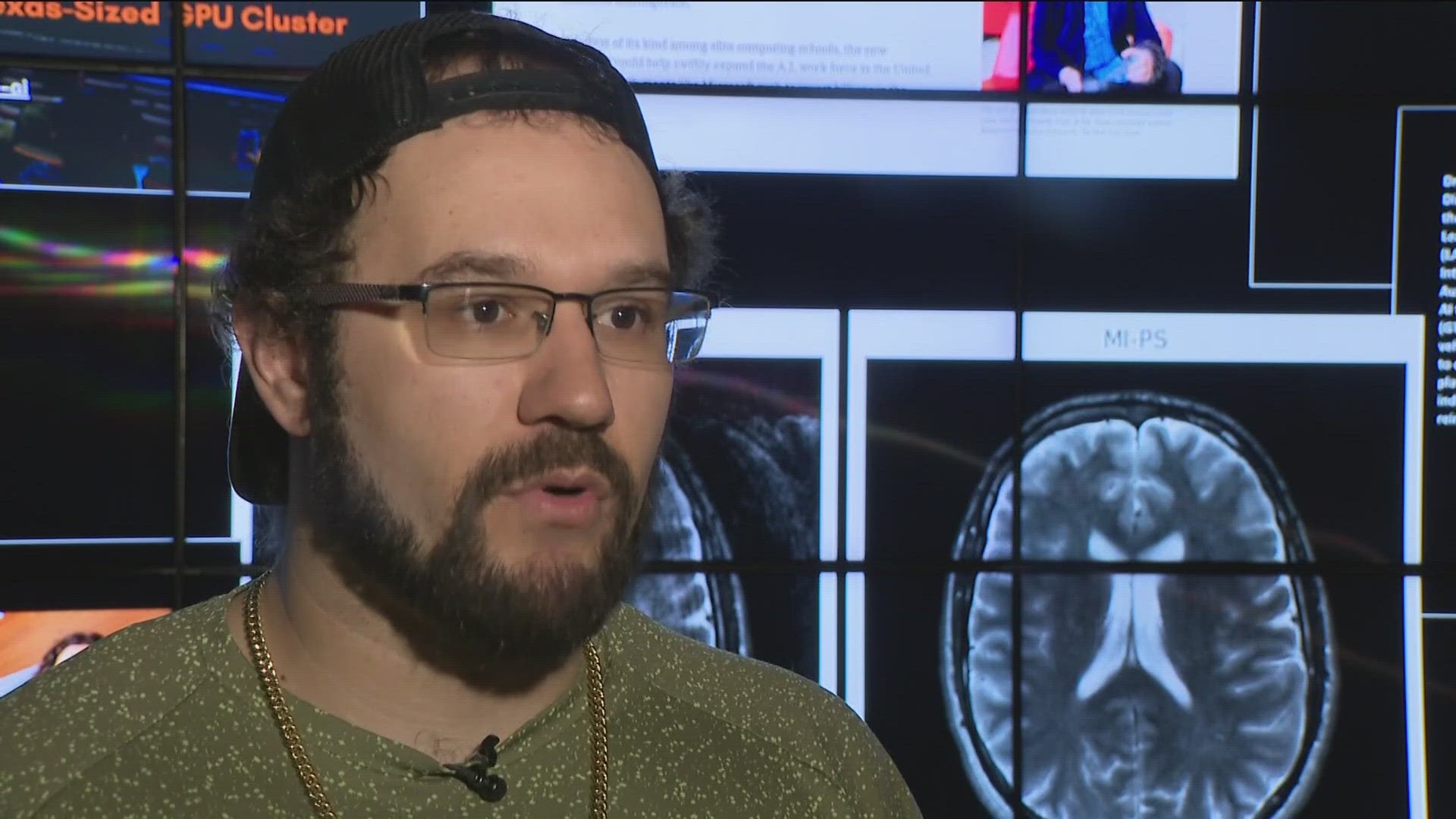AUSTIN, Texas — Lately, it seems like artificial intelligence (AI) is everywhere. When we shop online, to make music and even to chat.
Now, researchers at the University of Texas at Austin are using it to help speed up the production of medicine used to treat Alzheimer’s disease.
“AI will drastically accelerate our shots on goals and help us get things over the fence,” said Daniel Diaz, a UT postgrad Ph.D. student who now leads the Deep Proteins group for the Institute for Foundations of Machine Learning.
Diaz said he teaches AI bioorganic chemistry that researchers can apply to unique systems. Their focus is on an active ingredient found in the wild daffodil.
According to Diaz, the ingredient in the flower is used to create the Alzheimer's medication galantamine.
"This daffodil primarily grows in Scotland," Diaz said. “You can imagine if there's ... a famine in Scotland, or some virus attacks, these daffodils .... we'd lose our supply.”
Diaz said to make a pound of the medication, they have to use 333 daffodils. The active ingredient costs $23,000 per pound, and the prescription costs $80 right now.
“So, right now, even though that drug is a generic drug, it costs a lot of money to go get it at your local Walgreens or CVS pharmacy," Diaz said. "But what if you could instead brew it here? Right here in Texas."
To do that, Diaz said the researchers have to recreate the daffodils' genes, or the proteins in it, that make the drug.
“The total possible mutations you can make in a protein, it's like more than the number of stars in the world," Diaz said. "How do you pick which ones to begin with?"
According to Diaz, the AI software AlphaFold helps identify which proteins are good to use or to avoid. At the same time, the researchers used bio-sensor technology, created by an author of the study Simon d’Oelsnitz, to see if the protein would work.
“We're going from like 0.1%, up to 25%," Diaz said. "Dramatically improves our speed of actually finding improved proteins."
Diaz said without AI, the work usually takes months to years to figure out. But he said they have no idea what the genetic material or DNA of the protein looked like. He said by using the AI, they were able to recreate 95% of the protein structure in three to five months.
However, Diaz said AI isn’t flawless and still needs human help. Even though they uncovered 95% of the structure, it wasn’t perfect.
Wan Tae Kim, a UT structural biologist graduate student, helped figure that out. Kim said he had been working on the project for five years.
“There was like, a 5%, discrepancy," Kim said. "Actually, that discrepancy was very critical for predicting how the drug is binding into the enzyme. AI is very helpful ... But it still cannot cover all parts of structural biology. “
Diaz said AI is evolving so fast that they also use two other AI systems that can add ingredients and vitamins to the protein and show how to build the protein in real life. It's not only supposed to make the process cheaper and faster, but it could also eliminate the need to use daffodils.
“Whenever you're dependent on nature, you have to wait for things to be in season," Diaz said. "You're also limited by what nature gives you ... You can bring the price of the drug down significantly, rather than having the price be dictated by the supply of daffodils.”
Diaz said once this process becomes more widely adopted, it can be used to bio-manufacture other medications, even synthetic ones, for heart, cancer, and more.
“Essentially revolutionizing how we manufacture goods in the world. Nature is kind of the king of chemistry and just learning how to tap into nature’s resources ... To mimic it on how it produces or how it supplies its chemicals, you can kind of change our environment," Diaz said.
Diaz the researchers are currently working to figure out the rest of the genetic material for the drug.

